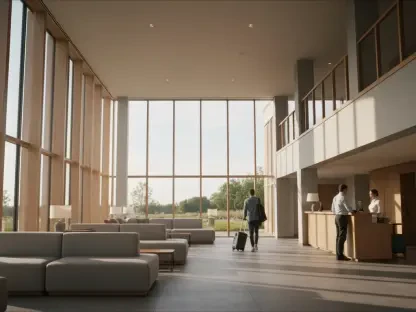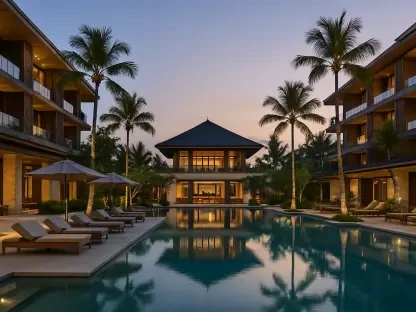Imagine checking into a hotel in a vibrant but modestly sized city. Instead of the typical humdrum of mere lodging, you find yourself immersed in an innovative blend of local culture, aesthetic design, and tech-savvy conveniences, all within an expansive lobby buzzing with energy. You might assume you’re in a cosmopolitan hub, yet this is happening across smaller markets. The hospitality industry is undergoing a dynamic transformation, attracting savvy travelers seeking much more than a bed for the night.
Redefining Middle-Market Attractions
This shift is largely driven by a cultural evolution: travelers, especially millennials and younger generations, crave experiences that offer more than the standard hotel stay. These demographics are shaping the hospitality industry’s changing norms with their emphasis on unique, authentic travel. Experience-driven journeys now prioritize genuine local immersion, something that catches the eye and heart beyond mere functionality. These trends aren’t limited to just major cities; they’re expanding into secondary markets, reflecting a fundamental change in what guests deem valuable.
Emerging Trends: How Lifestyle Services Are Changing
In response to these evolving needs, hotels in traditionally overlooked markets are rising to the occasion. By incorporating immersive experiences and lifestyle-oriented services, these establishments are redefining what it means to cater to modern travelers. The advent of the remote work culture has also changed the landscape. An estimated 40 million digital nomads now roam the globe, demanding spaces that accommodate both productivity and relaxation. This trend opens doors for hotels to innovate in places that previously focused solely on lodging guests.
The challenge lies in balancing this new definition of quality—rich, engaging guest experiences—alongside profitability. Brands like Marriott’s Sheraton Hotels & Resorts are pioneering flexible spaces that echo this vision, providing lively lobbies and artistically designed areas that seamlessly integrate working and socializing.
Voices from the Field: Experts and Travelers Weigh In
Nathan Johnson, a hospitality innovator, notes that “today’s travelers are seeking a connection beyond comfort—they’re after a sense of place that resonates with their individuality.” According to recent studies on travel behavior, over half of all travelers now emphasize the value of authentic local experiences. For digital nomads like Ashley Bennett, the demand leans toward hotels that offer culturally rich environments, dynamic social spaces, and efficient work hubs all in one.
The integration of principles such as biophilic design further enhances these experiences, creating hotels that blend natural elements with architectural finesse. Practical design aspects—like large glazing for continuity between indoor and outdoor settings and select eco-friendly amenities—make aesthetic and ecological sense.
Implementing Practical Strategies in Hospitality
Hotels seeking to redefine guest experiences must delve into the intersection of design, technology, and cultural relevance. Initiatives like the incorporation of biophilic elements or the installation of recreational zones aren’t just trends but necessary adaptations for modern hospitality practitioners. Even further, embracing infrastructure that merges functionality for work and leisure will solidify an establishment’s relevance.
For example, concepts executed by Tru by Hilton, including local-themed murals and eclectic game zones, allow for an engaging environment that encourages guest interactions. These creative spaces invite leisure while maintaining a firm foundation in local culture.
Future Perspectives for Hospitality Innovators
The future offers immense potential for hospitality investors and developers to transform middle-market hotels from simple accommodations into centers of cultural and social exchange. By meeting the nuanced needs of digital nomads and younger travelers, hospitality providers can craft unique, meaningful experiences that appeal not only for short stays but for repeat visits. The promise lies in creative, resourceful design and embracing a vision where hospitality transcends traditional boundaries, crafting new standards for quality and engagement.
In sum, the evolving landscape challenges the hospitality industry to rethink its core offerings. By interweaving local culture, innovative designs, and cutting-edge technology, hotels can lay the groundwork for an inviting atmosphere where guests can find inspiration, comfort, and connection. Through strategic evolution, the hospitality sector can not only meet emerging demands but find sustainable ways to thrive amid changing travel dynamics.









